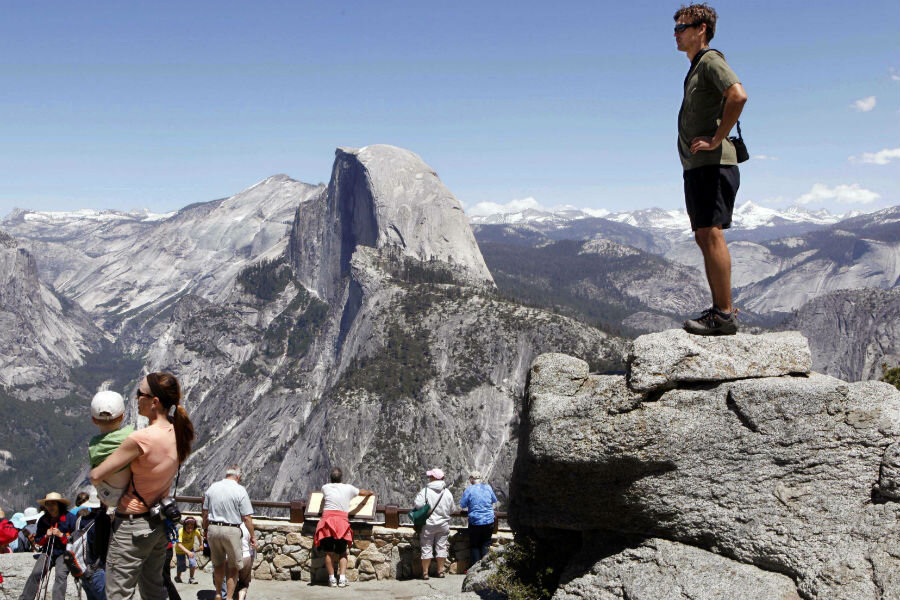How underfunded National Parks are turning more to the private sector
Loading...
The Obamas are touring Yosemite and Carlsbad National Parks this weekend, on a Father's Day trip meant partly to underscore the president's efforts to preserve more of the nation's natural splendors.
But the visit also meshes neatly with another of the president's priorities: boosting spending on infrastructure, in this case the threadbare system of roads, trails, visitor centers and other facilities in the country's national parks, wildlife refuges, and public lands. The National Park Service turns 100 on August 25, 2016.
The agency has an immense backlog of deferred maintenance, which it defines as necessary work delayed for more than a year. As of last year, that backlog had swelled to almost $12 billion worth of repairs.
At Yosemite alone, one of the nation's most famous national parks, more than half a billion dollars in repairs had been left on the back burner, including more than a quarter of a billion in alterations needed on the park's paved roads.
John Garder, appropriations director at the nonprofit National Parks Conservation Association, tells The Christian Science Monitor that the group was "excited" about the prospect of the new attention the president's visit could bring to the national parks' economic contributions – especially in light of a 10 percent downsizing of parks staff since 2010.
He added that the association was "dismayed" by the backlogs, saying, "We hope that as they travel, in addition to all the things they're going to emphasize, there's greater recognition of the needs of parks."
This year, Congress allocated $2.85 billion toward the National Park Service, an increase over previous years. But funding over the longer term hasn't kept pace with inflation, a Government Accountability Office report found last year. Meanwhile, the park service's campaigns to attract more visitors – inviting more wear-and-tear on roads and facilities – have been succeeding, drawing in a record 307 million people in 2015.
The House is considering a bill introduced back in March that would match federal dollars to private contributions and establish an endowment for the national parks for the first time, a plan supported by the National Park Service and the National Park Conservation Association.
Recently, though, shortfalls in funding have led the parks service to pursue some sources of revenue that stir unease in conservationist quarters.
In January 2015, the National Park Service waived a decades-old policy against any fundraising that would associate parks with alcohol and tobacco, agreeing to a $2.5 million co-branding campaign with Anheuser-Busch. Criticism over that move redoubled this May when director Jon Jarvis wrote in a memo that the logos of corporate donors would for the first time be allowed to appear – though without tag lines – in a variety of park locations.
In response, the watchdog group Public Employees for Environmental Responsibility (PEER) warned of the "gravitational pull" of corporate donations on park managers, and expressed concern that "influence peddling will soon become a major recreational activity in our national parks."
Others have urged the parks service to go further in reforming its revenue model. The libertarian Reason Foundation suggested in a 2013 report that private operators be granted concessions to run park maintenance, calling the year-round, full-time employment model used by states "inconsistent with the seasonal nature of parks visitation."
But opposition to such proposals appears to be well-entrenched, despite budget shortfalls. Mr. Garder pointed to polls showing the public's support for federal stewardship of national parks.
"The park ranger is arguably the most beloved federal public servant," he said. "People expect national parks to be different."







